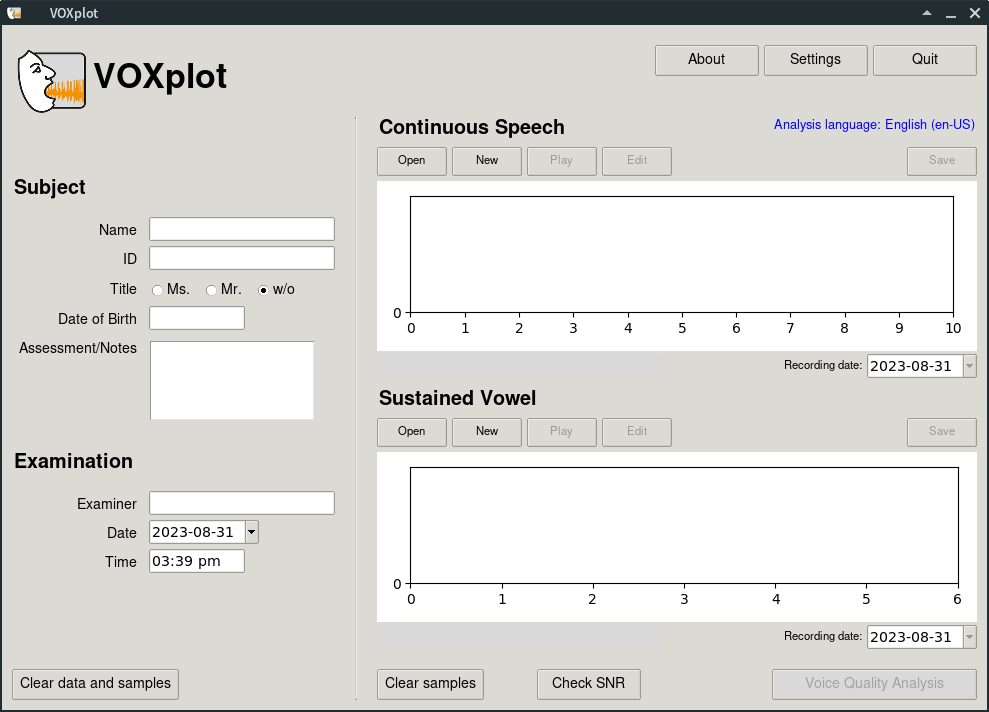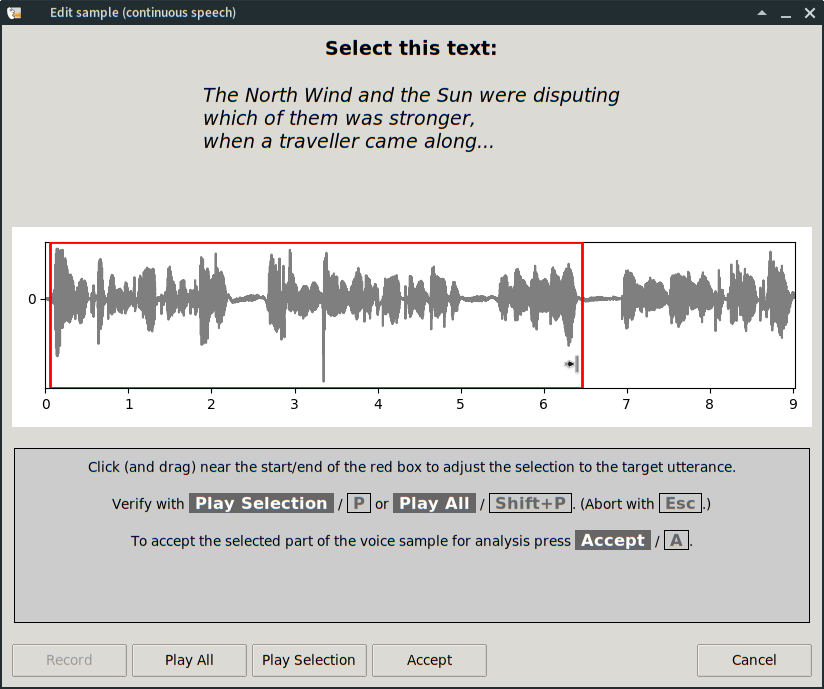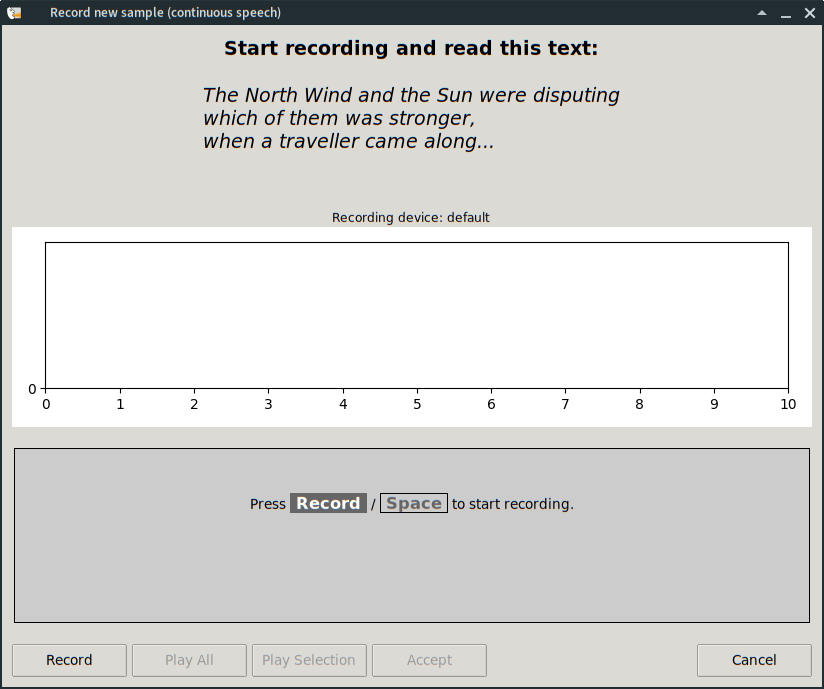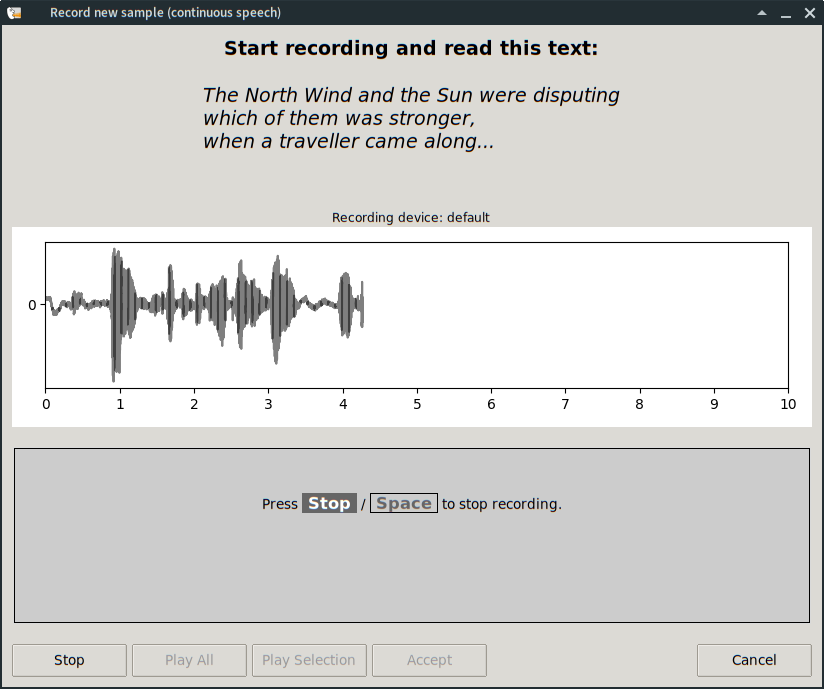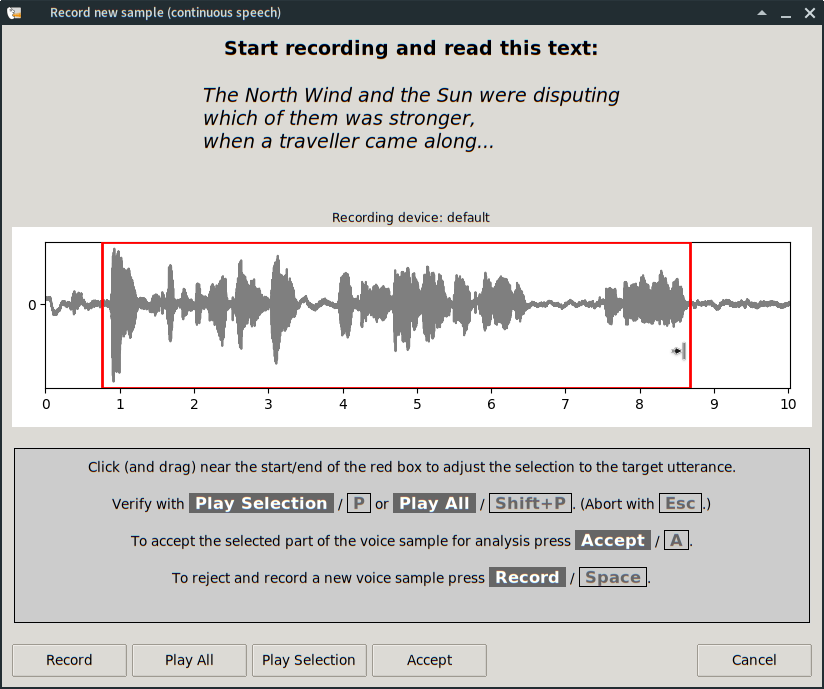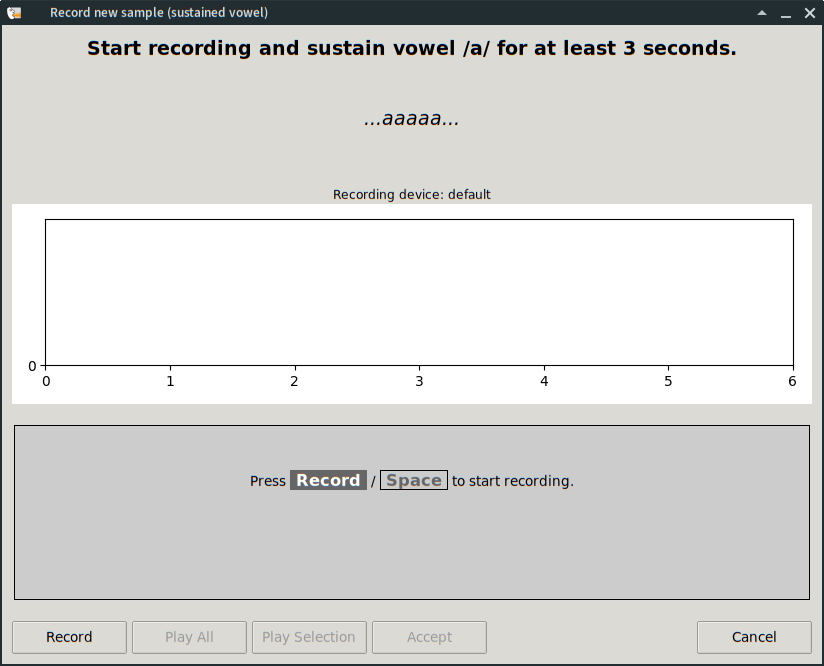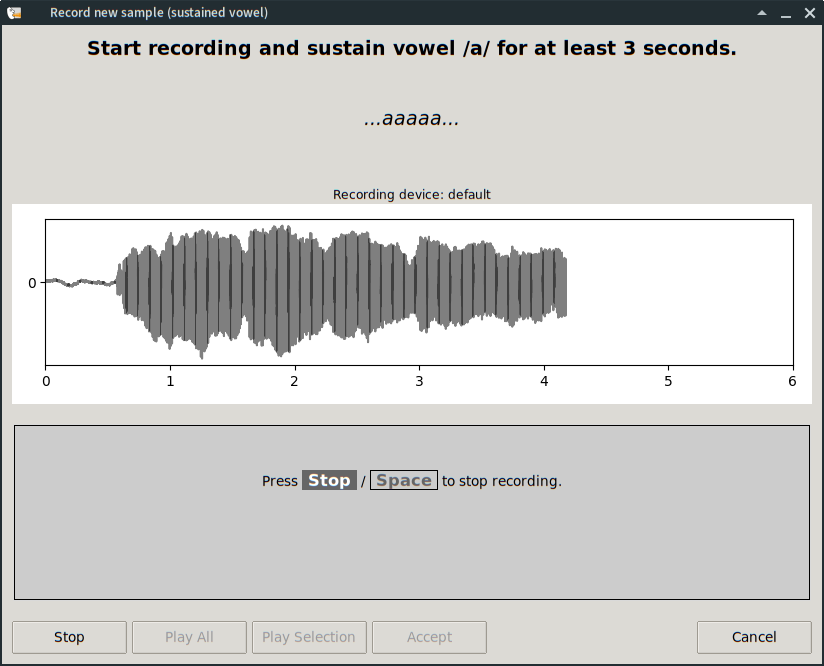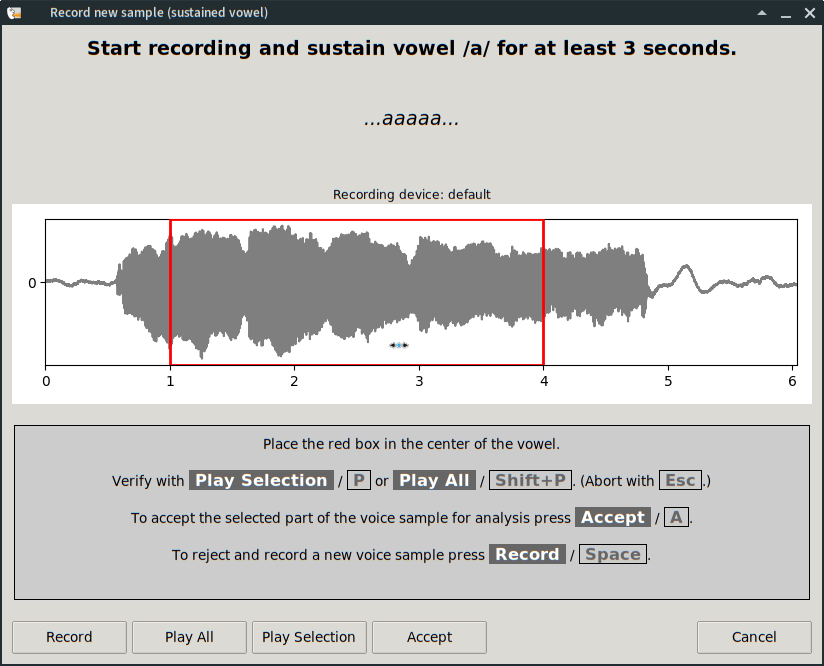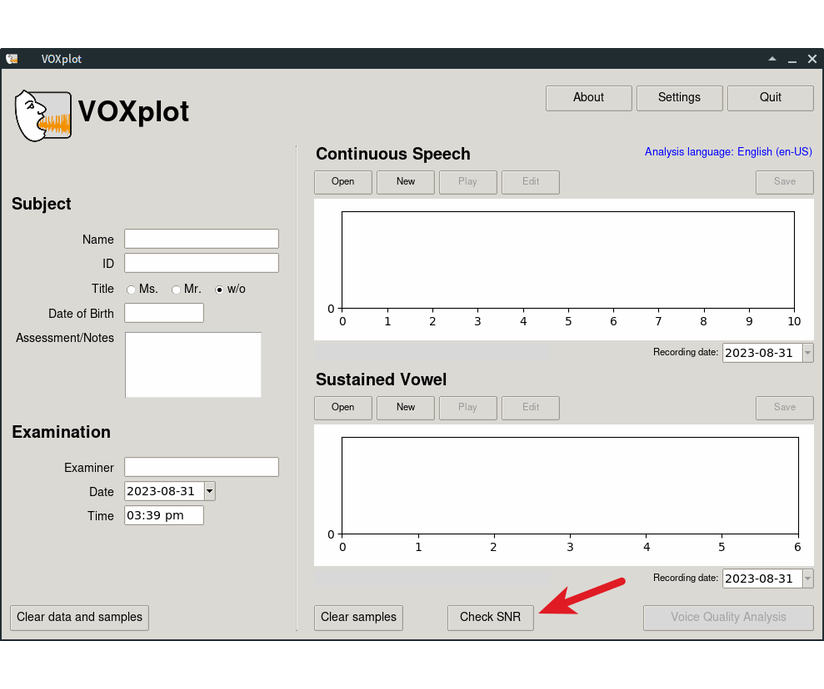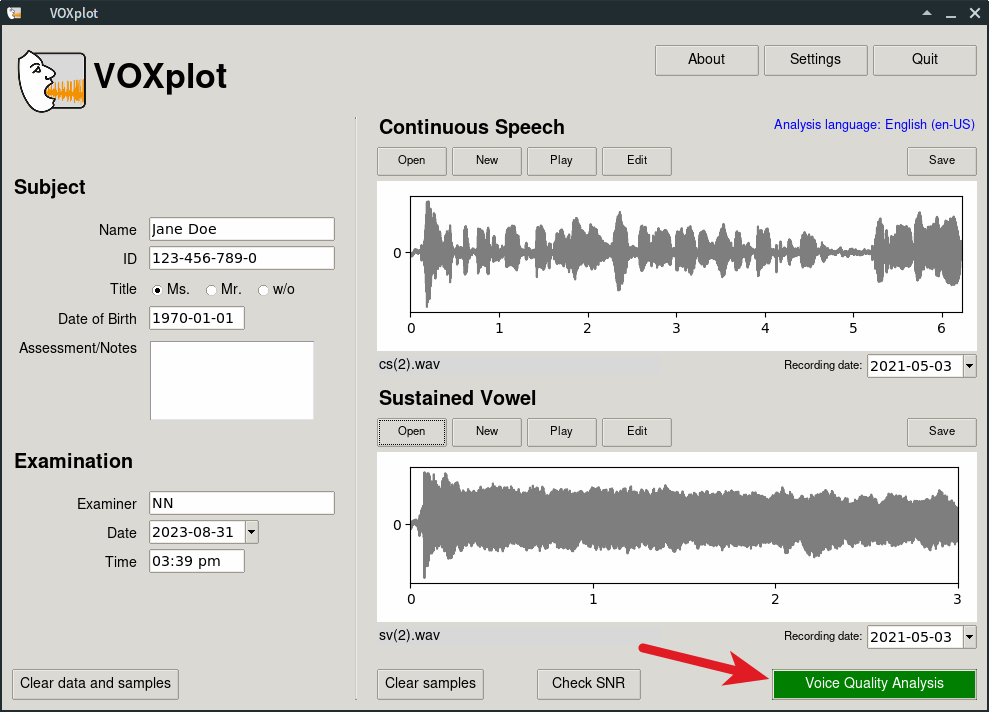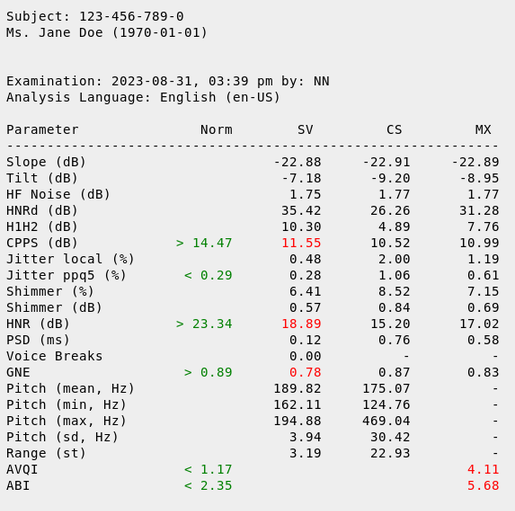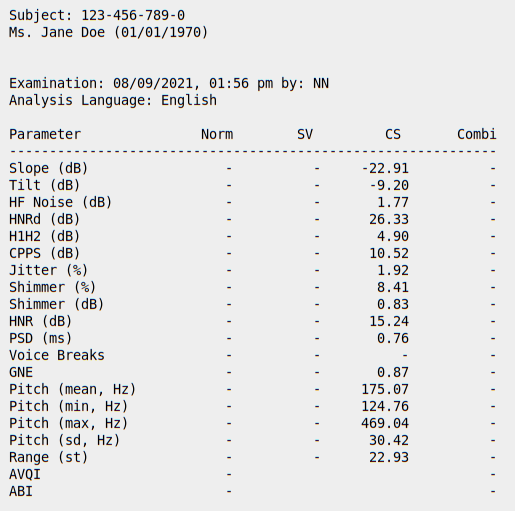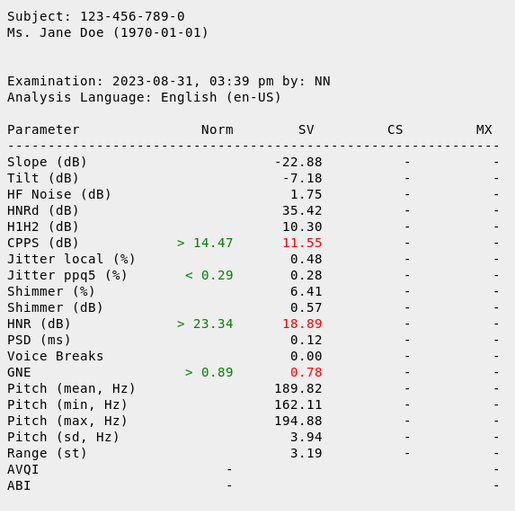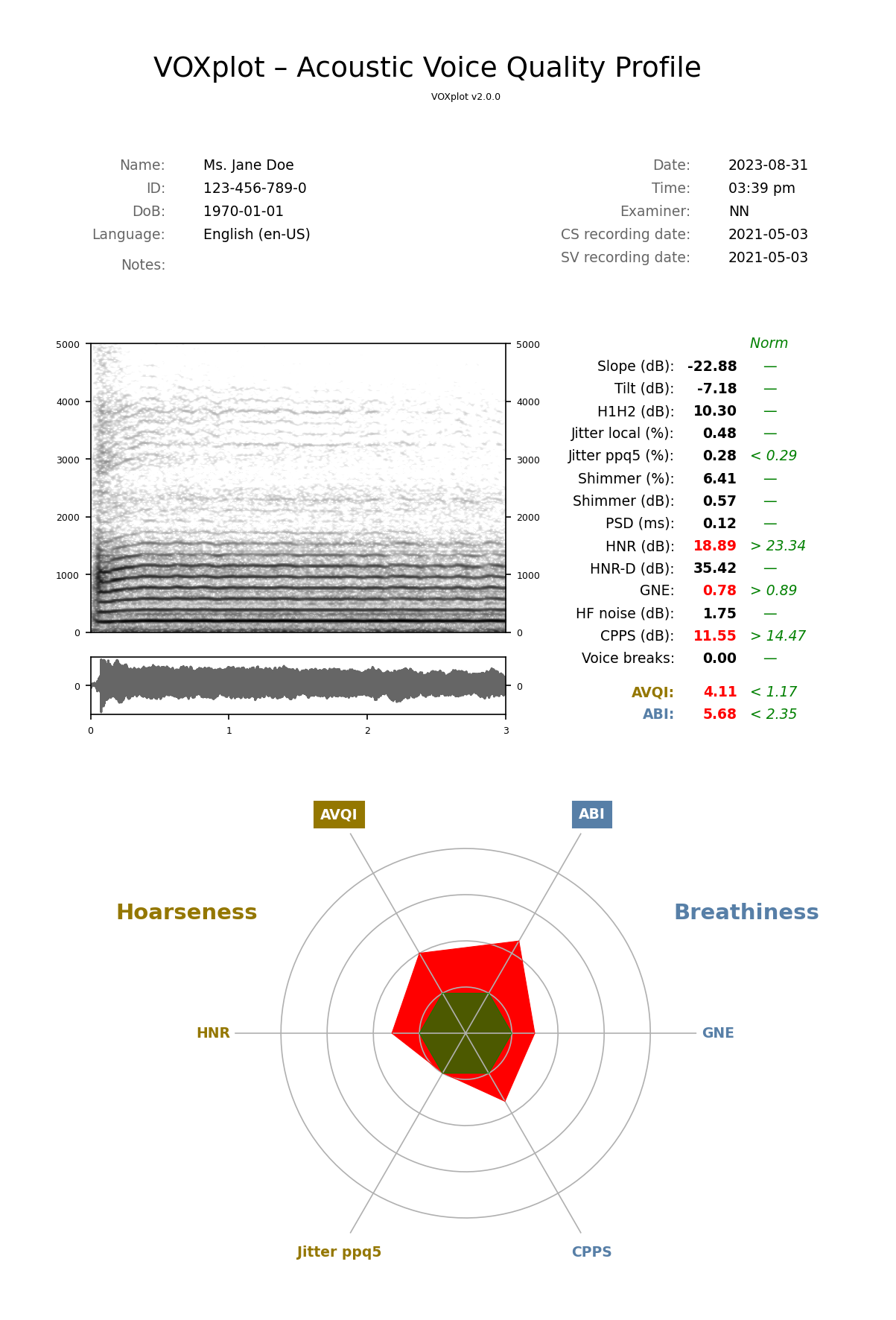
VOXplot
Acoustic Voice Quality Analysis: Simple | Standardized | Intuitive
We have developed VOXplot with the aim of providing a tool for acoustic voice analysis that is based on scientific evidence as well as proven and reliable algorithms and at the same time easy and intuitive to use. VOXplot is open source and available for free for Windows, macOS and Linux.
Simple and Reliable
VOXplot's user interface is designed to be simple, robust, and reliable. A complete acoustic analysis of voice quality requires just a few clicks.
VOXplot is multilingual. The user interface is available in three languages: English, German, Dutch. Valid analysis parameters are currently available for 12 languages: German, English, Dutch, Spanish, Japanese, Korean, Brazilian Portuguese, Malayalam, Kannada, Persian/Farsi, Finnish, and Italian.
Standardized Analysis
VOXplot is developed in close cooperation with scientific advisor Prof. Ben Barsties v. Latoszek.
The analysis of a total of 19 acoustic parameters and two multidimensional indices is based on proven Praat algorithms with scientifically based presets. It follows the recommendations for the analysis of acoustic voice quality parameters published in the works on the voice quality indices AVQI[1] and ABI[2].
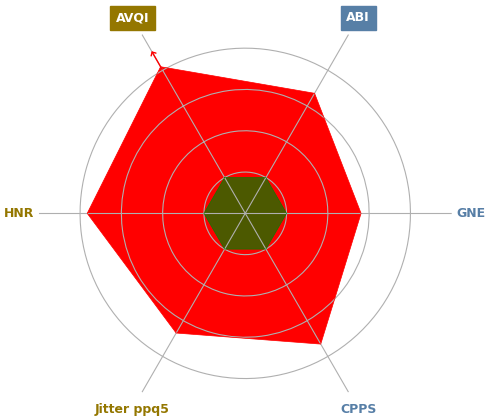



Intuitive Visualization
VOXplot generates a voice quality profile with all examination data and measured values on a single page.
In addition to numerical values, the result can be easily and intuitively assessed using a norm-value circle of 6 acoustic dimensions assessing hoarseness and breathiness.
Further assessment of the sustained vowel is supported by means of a narrowband spectrogram.
User Interface
The clear user interface of VOXplot provides a simple workflow that can be applied without a long training period. The user interface is currently available in three languages: German, English, Dutch.
In the left area of the main window, examination data can be entered (optional). The right area of the main window is used to select two voice samples: Continuous speech and a sustained vowel (preferably the vowel [a:]). These two voice samples are necessary for the calculation of the voice quality indices AVQI and ABI. For this purpose, a text passage (content and length of the passage is language-depend) and the vowel [a:] with a duration of 3 sec. are required.
For AVQI and ABI analysis, 12 analysis languages are currently available in VOXplot, which can be selected in the settings. The language selection is based on validation studies in German[3], Japanese[4,5], Korean[6], Dutch[7,8], Spanish[9], Brazilian Portuguese[10,11], the South Indian languages Malayalam and Kannada[15,16], as well as Finnish[18,21], Persian/Farsi[20], Englisch[22], and Italian[17].
Analysis of only one voice sample (continuous speech or sustained vowel) is possible. However, AVQI and ABI calculation is then omitted.
If voice samples are already available as WAV files, they can simply be loaded into VOXplot. If necessary, the signal section to be included in the analysis can still be adjusted after loading. VOXplot tries to determine the recording date of voice samples automatically. If this fails, the date can be corrected manually.
Of course, voice samples can also be recorded, trimmed, and saved directly with VOXplot.
VOXplot can use all recording devices that are connected to the computer and are recognized and supported by the operating system.
An important criterion for determining whether a voice sample is suitable for acoustic analysis is the Signal-to-Noise Ratio (SNR). Therefore, since version 2, VOXplot offers the possibility to evaluate SNR for a specific recording setup, so that the recording setup can be optimized, if necessary, before an examination is performed.
As soon as at least one voice sample is available, the analysis can be started. A duration of 3 sec. is assumed for analysis of the sustained vowel. When loading existing samples, you will be automatically informed if the vowel duration does not meet this requirement; vowels that are too long can be trimmed within VOXplot.
By clicking on the green button, all relevant acoustic voice parameters are calculated fully automatically, no further input is required. (Depending on the performance of the computer, the analysis may take a few seconds).
Acoustic Analysis
VOXplot uses Praat version 6.0.48, which has been validated in several AVQI or ABI studies, to calculate the following acoustic voice parameters (Praat is already included in the executable VOXplot packages and does not need to be installed separately):
- Slope (dB)
- Tilt (dB)
- HF noise (dB)
- HNR-D (dB)
- H1H2 (dB)
- CPPS (dB)
- Jitter local (%)
- Jitter ppq5 (%)
- Shimmer (%)
- Shimmer (dB)
- HNR (dB)
- PSD (ms)
- Voice breaks
- GNE
- Pitch mean (Hz)
- Pitch min (Hz)
- Pitch max (Hz)
- Pitch sd (Hz)
- Pitch range (st)
If two voice samples are available (continuous speech/CS & sustained vowel/SV), all parameters (except pitch) are also calculated for the combination of both samples (MX) and the two voice quality indices Acoustic Voice Quality Index (AVQI) and Acoustic Breathiness Index (ABI) are computed.
In order to be able to better assess the analysis results, norm values are provided for the 4 most relevant vowel parameters (in addition to AVQI and ABI cutoff scores). As shown in a recent study based on 218 voice samples, these four parameters can be validly associated with the perceptual assessment of hoarseness or breathiness[19]. For hoarseness, these are the two parameters Harmonics-to-Noise Ratio (HNR) and the Pitch-Perturbation Quotient with a smoothing factor of 5 periods (Jitter ppq5). Associated with breathiness are Smoothed Cepstral Peak Prominence (CPPS) and Glottal-to-Noise Excitation Ratio (GNE).
Due to the close cooperation with the scientific consultant Prof. Ben Barsties v. Latoszek, VOXplot is characterized by high quality and reliable analysis procedures. Prof. Barsties v. Latoszek is an active researcher in the field of acoustic voice analysis with a special focus on multiparametric voice quality indices (AVQI & ABI), and publishes regularly in internationally renowned journals (Journal of Voice; The Laryngoscope; Clinical Otolaryngology; Journal of Speech, Language, and Hearing Research; Logopedics Phoniatrics Vocology etc.).
Voice Profile
Analysis results are presented as a voice profile on a single page. The profile contains examination data, numerical analysis results of the vowel sample, a narrowband spectrogram of the vowel sample, and a norm-value circle that highlights deviations in 6 acoustic dimensions using an intuitive traffic light system (norm range: green / deviation: red).
The left half of the diagram shows 3 parameters that best correspond to the voice abnormality of hoarseness. The right half shows 3 parameters that best correspond to the pathological subcomponent of hoarseness: breathiness of a voice. This assignment of parameters is based on [19].
The voice profile can be archived as a PDF, PNG or JPG file. In addition, numerical analysis results can be exported in CSV format for further processing, e.g. in Excel or a statistics package.
